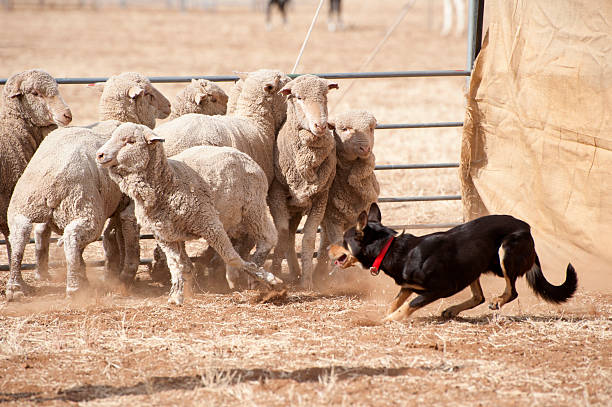Australian Kelpie

Breed History:
The Australian Kelpie was developed in Australia in the late 19th century to meet the harsh demands of herding sheep and cattle across vast, rugged terrain. It descends from collie-type dogs imported from the British Isles, though no dingo blood has been scientifically confirmed despite popular myth.
Named after a mythical Celtic water spirit, the first Kelpie was a black-and-tan female born in the 1870s. These dogs were bred for their endurance, intelligence, and herding ability, resulting in a highly versatile and tireless working dog. Today, the Kelpie is divided into working and show lines, both of which are respected for their agility and loyalty.
|
Gender |
Height |
Weight |
|
Male |
46-51 cm |
14-21 kg |
|
Female |
43-48 cm |
12-20 kg |
Size: Medium
Life Expectancy: 12–15 years

Breed Appearance:
The Kelpie is a compact, muscular dog with a fox-like face, erect ears, and an alert expression. It is built for speed and stamina, with a low-set tail, strong legs, and nimble feet.
Its double coat is weather-resistant, with a short, dense undercoat and a straight, hard outer coat. Colours include black, red, chocolate, fawn, smoke blue, and black & tan, sometimes with white markings.
Breed Type – Herding Dog:
The Kelpie is a born worker, known for its independent problem-solving skills and unmatched drive. It excels at herding livestock, often working with minimal commands—even over long distances.
While affectionate with its family, the Kelpie is a task-focused breed that requires regular mental and physical stimulation. It is not a lapdog, but rather a purpose-driven, high-energy breed.

Training:
Highly intelligent and responsive, Kelpies are a trainer’s dream—but only for those who can match their energy and focus. They learn quickly and thrive on challenges.
Early socialisation and obedience training are crucial to prevent boredom-related behaviours. Positive reinforcement and job-oriented tasks, like agility or herding trials, are ideal for this breed.
Health & Care:
Generally robust, but may be prone to:
-
Progressive retinal atrophy (PRA)
-
Collie eye anomaly (CEA)
-
Cryptorchidism
-
Hip dysplasia (less common)
-
Luxating patella
Regular vet checkups, a balanced diet, and proper conditioning help maintain long-term health.

Living Conditions:
The Kelpie is not suited for apartment life or sedentary households. It needs space to run and a job to do. Ideal living conditions include a farm, rural property, or active suburban household with a large yard and secure fencing.
Kelpies bond closely with their humans and do not do well if left alone or under-stimulated for long periods.
Exercise:
This breed demands vigorous daily exercise and thrives on activity. Ideal options include:
-
Herding work or trials
-
Long walks, hikes, or runs
-
Agility, obedience, or flyball
-
Puzzle games and training sessions
Without enough exercise and stimulation, Kelpies can become destructive or obsessive.
Grooming:
Low maintenance:
-
Weekly brushing to control shedding
-
Occasional baths
-
Regular ear checks (especially for working dogs)
-
Routine nail trimming and dental care
The coat naturally repels dirt and is weather-resistant.

Advantages:
-
Extremely intelligent and trainable
-
Tireless worker with strong herding instincts
-
Loyal and eager to please
-
Low grooming needs
-
Excellent agility and stamina
-
Versatile—excels in sports, work, and training
Disadvantages:
-
Needs high levels of exercise and mental stimulation
-
Not suited for inactive households or city apartments
-
Can be destructive or neurotic if bored
-
Strong herding instincts may include nipping
-
Requires experienced, committed handling
-
May be aloof with strangers

